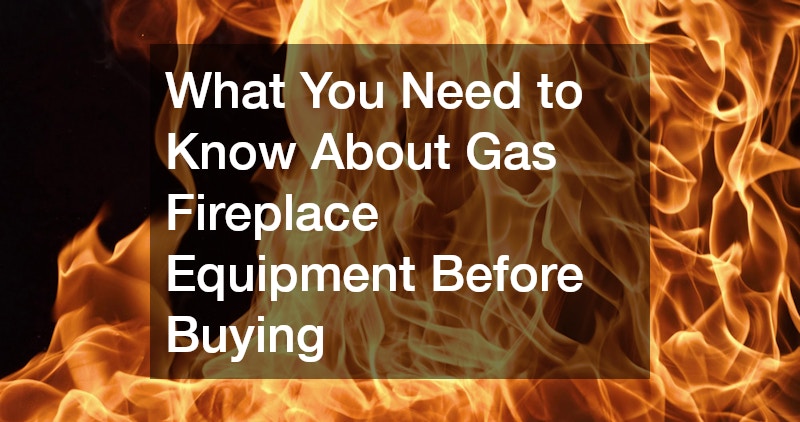
Gas fireplaces have become a go-to heating solution for modern homeowners, thanks to their combination of style, convenience, and energy efficiency. Whether you're upgrading your existing fireplace or installing one for the first time, it's important to go beyond the aesthetic appeal and take a closer look at the equipment that powers these systems. From different venting options to fuel types and safety features, understanding the mechanics behind gas fireplace equipment will help you make a smarter, more tailored choice for your home.
Before you invest, consider how various models operate, what installation requirements they have, and the level of upkeep involved. The right fireplace not only enhances comfort and ambiance but also contributes to long-term energy savings and indoor air quality.
Video Source
This guide will walk you through the essential types of gas fireplaces, key decision-making factors, and maintenance tips to ensure you select a unit that fits your home’s needs and your lifestyle.
These fireplaces are popular for their efficiency and safety, using a sealed system to vent air in and out. This feature not only maximizes heat retention but also minimizes any potential risks of combustion byproducts entering indoor air.
Direct vent fireplaces draw in outside air for combustion and expel the byproducts back outside, creating a controlled burn environment. This ensures that the indoor air quality remains unaffected.
Another advantage is that they can be installed in almost any room with an exterior wall. This adds placement flexibility, making it easier to align with your interior design goals.
Vent-free options do not require a chimney or flue, making them easier to install but raising some concerns about indoor air quality. These units offer high efficiency levels since all the heat produced stays inside the room.
However, because vent-free fireplaces release combustion byproducts directly into the living area, it's essential to ensure proper ventilation. Some models come equipped with oxygen-depletion sensors to automatically shut off the unit if oxygen levels fall too low.
State and local regulations may affect the availability of vent-free units, as some areas restrict their use due to concerns about air quality. It's important to check local building codes before purchasing.
Understanding the available space and ideal location will influence the size and style of the gas fireplace best suited for your needs. Larger spaces may benefit from models with higher BTU outputs to adequately heat the area.
The aesthetic impact of the fireplace should also align with the room's décor. Choosing the right style ensures that your new purchase complements your home while providing warmth and ambiance.
Placement is crucial as it affects both functionality and safety. The location should have clearances defined by the manufacturer to prevent fire hazards.
Different models use either natural gas or propane, each with its own efficiency levels and cost considerations. Natural gas is often more cost-effective and convenient for homes already connected to a gas line.
Propane fireplaces, while potentially more expensive to operate, offer flexibility for rural areas without natural gas access. Market demand and regional availability can also impact pricing between these fuel types.
Assessing your long-term energy needs and costs will help determine the most economical choice. Both fuel types offer clean-burning performance with lower emissions compared to wood fireplaces.
Routine cleaning of the glass, burners, and vents is necessary to ensure safe and efficient operation. Dust and debris can accumulate, affecting performance and posing potential safety hazards.
A soft cloth and appropriate cleaner can be used to wipe down the glass front. Meanwhile, the burners and interior should be cleared of any obstructions periodically to maintain optimal function.
Neglecting regular cleaning can lead to inefficient combustion and increased utility costs. A fireplace in peak operating condition not only saves money but also enhances safety.
Annual professional inspections are recommended to check for any potential safety hazards or maintenance needs. An expert can identify issues such as gas leaks or faulty valves before they escalate into more serious problems.
Professionals equipped with diagnostic tools can provide comprehensive checks that go beyond routine maintenance. This includes examining the structural integrity of the fireplace and the venting system.
Regular inspections ensure that your gas fireplace continues to operate efficiently and safely over time. Investing in these services can extend the lifespan of the fireplace and provide peace of mind.
Understanding the types, considerations, and maintenance involved with gas fireplace equipment is crucial for making an informed purchase. With the right knowledge, you can enjoy the warmth and ambiance of a gas fireplace with confidence and ease.
